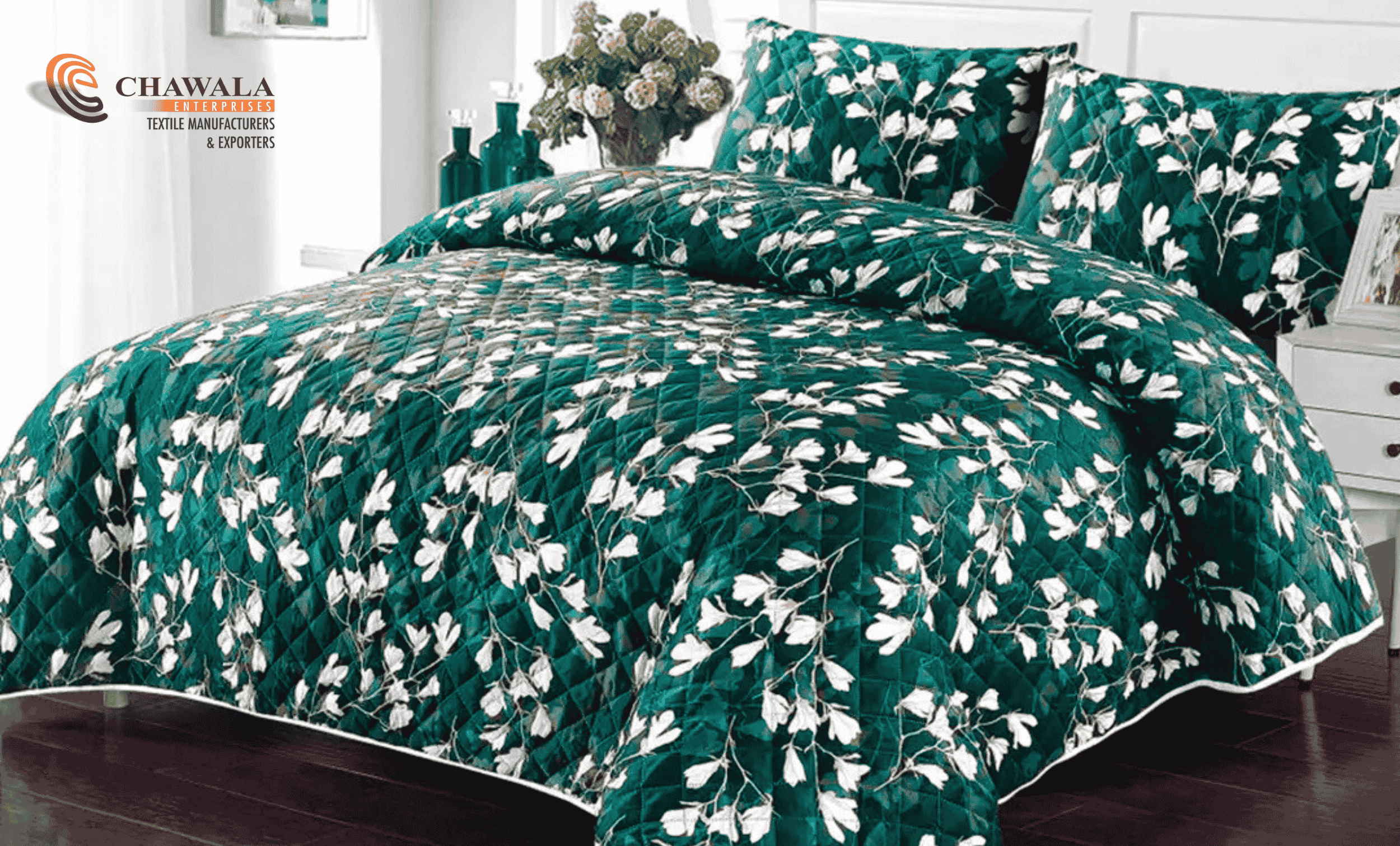
Microfiber printed sheets have become a popular choice in the bedding industry due to their soft texture, durability, and vibrant designs. As a manufacturer, understanding the intricacies of microfiber printed sheets—from their materials to their production process—can help you effectively market your products and meet consumer demand. This article delves into what microfiber printed sheets are, how they are made, and why they are an excellent choice for consumers and manufacturers alike.
Microfibre printed sheets are bed linens made from ultra-fine synthetic fibers, typically polyester or a blend of polyester and polyamide. These fibers are much finer than a human hair, which gives microfibre sheets their unique softness and lightweight feel. Microfibre sheets are often printed with various designs, patterns, and colors, allowing consumers to choose styles that match their bedroom aesthetics.
Microfibre sheets are primarily made from polyester or a polyester-polyamide blend. The choice of materials contributes to the sheets' overall performance:
Environmental Considerations
As a manufacturer, it's essential to consider the environmental impact of using synthetic fibers. While microfibre is not biodegradable, many manufacturers are now exploring sustainable practices, such as using recycled polyester in their production processes.
The manufacturing process of microfibre printed sheets involves several steps, ensuring high-quality products that meet consumer expectations. Here’s an overview of the production process:
The first step in creating microfibre sheets is the production of the fibers themselves. This involves the extrusion of polyester or polyamide through fine holes to create ultra-fine filaments. The fibers are then collected and spun into yarn.
Once the yarn is produced, it is woven into fabric. The weaving process typically involves a tight weave to enhance the fabric's softness and durability. A low denier count is used, which means the fibers are extremely fine and densely packed.
After weaving, the fabric is treated for dyeing. Manufacturers can use various dyeing techniques, such as reactive dyeing or digital printing, to apply vibrant colors and patterns. Digital printing, in particular, allows for intricate designs and customization, catering to specific market demands.
After dyeing, the fabric undergoes a finishing process, which may include heat-setting to stabilize the fibers and enhance their properties. This process ensures that the sheets retain their shape and color after multiple washes.
Once the fabric is finished, it is cut into the desired sheet sizes. The edges are sewn to prevent fraying and to ensure durability. Manufacturers may also offer a variety of products, such as fitted sheets, flat sheets, and pillowcases.
Before packaging, microfibre printed sheets undergo rigorous quality control checks to ensure they meet industry standards. This includes checking for color consistency, fabric integrity, and overall appearance.
As a manufacturer, promoting the advantages of microfibre printed sheets can attract consumers looking for quality bedding. Here are some key benefits:
Microfibre printed sheets are often more affordable than high-thread-count cotton sheets, making them an attractive option for budget-conscious consumers.
Microfibre sheets dry quickly and are easy to care for. They can be machine washed and do not require special treatment, appealing to busy individuals and families.
The ability to print vibrant designs and patterns allows manufacturers to offer a wide variety of styles, catering to diverse consumer tastes. This can include everything from floral patterns to geometric designs, making it easy for consumers to find sheets that suit their bedroom decor.
Microfibre printed sheets are versatile and can be used in various settings, including residential homes, hotels, and vacation rentals. Their durability and ease of care make them ideal for high-traffic environments.
Understanding how microfiber sheets compare to other materials can help manufacturers position their products effectively in the market:
Cotton vs. Microfiber
Bamboo vs. Microfibre
Linen vs. Microfibre
Microfiber printed sheets are versatile and can be utilized in various settings:
Proper care and maintenance can extend the life of Microfiber printed sheets. Here are some guidelines for consumers:
As a manufacturer, it is essential to address the environmental impact of Microfiber sheets. While Microfiber is not biodegradable, many manufacturers are adopting sustainable practices:
Microfiber printed sheets represent a modern, versatile, and cost-effective bedding option that appeals to a wide range of consumers. As a manufacturer, understanding the materials, production processes, and benefits of microfiber printed sheets can help you effectively market your products and meet the demands of a competitive market. By focusing on quality, sustainability, and consumer education, you can establish a strong presence in the bedding industry and contribute to a more sustainable future.
We are open from Monday to Saturday / 09:00am – 05:00pm
Address: 3-K.M. Jhumra Road, Khurrianwala, Faisalabad, Pakistan.
Phone: +92-41-4360228 / +92-332-9669191
E-mail: hassan@chawala.com.pk / info@chawala.com.pk